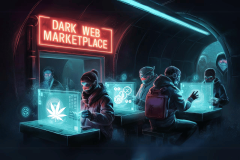Yesterday I attended a “Chalk talk on Global Innovation and Collaboration” in New York, hosted by BSG Alliance. I went because it was led by Don Tapscott who wrote one of my favorite business books – Wikinomics, How Mass Collaboration Changes Everything. That book ranks up in my Top 10 Business Books of all time (and with 30 years in business, I have read quite a few).

Dan Tapscott is an example of what in my last post I called “consultants in a knowledge intensive space” who write to build their consulting business. He is clearly in the very elite category that writes books and not just Blogs (you can see others here). Since 1992 he has run a “think tank and strategy consulting” business called New Paradigm. The books clearly help him to a) think through major trends and b) increase visibility/credibility. At his level the book sales are probably meaningful as well.
Yesterday’s event was to publicise the fact that New Paradigm had been acquired by BSG Alliance, a company that has recently raised $20m and is on an acquisition spree, buying consulting firms that help Fortune 500 behemoths deal with what they characterise as a “category 6 perfect storm” brought on by Web 2.0 mass collaboration, Net Generation employees and globalization.
I call this “the business of teaching elephants to dance” after another one of my Top 10 Business Books, the epic tale of how Lou Gerstner took an IBM that was on the ropes in 1992 (having failed to adapt to a PC centric world) and made it great again, which he called “Who says Elephants Can’t Dance?”
I believe that BSG is correct in identifying this as a historic turning point for large enterprises. Large companies have periodically gone through wrenching change in the way that IBM did. Technology companies have been particularly prone to these large “transformations” as the period of sustainable advantage is so short. However what is historically different today is how many companies and industries are going through a wrenching transformation.
Helping Fortune 500 companies to make this kind of transformation is what companies such as Accenture and IBM do. They drive change all the way from strategic Board level objectives down to business process outsourcing. At one point a BSG spokesman said something as an aside along the lines of “of course we don’t want to be another Accenture” but at some level they appear to be aiming to get into that game.
From the Web 2.0 perspective, we see this as Enterprise 2.0 – the use of Blogs, Wikis and social networking type tools within the Enterprise. BSG appear to want to play in this space but were careful to downplay the technology and stress the strategic business drivers. This is smart from their perspective as the technology will increasingly be either a) open source b) priced at consumer levels or c) bundled into the “stack” of a big vendor such as Oracle, SAP or IBM.
The one aspect of change that BSG and the panel they assembled seemed most concerned with was the generational change. They are looking at the Net Generation (the people who Don Tapscot described in his earlier book Growing Up Digital). It was slightly surreal to listen to lots of Baby Boomers in suits using “corporate-speak” describe their teenage children multitasking homework, iPod, Facebook and IM with TV in the background. Their point was that this is how the Net Generation will expect to work and Fortune 500 companies need to find ways to attract the best and brightest talent from this generation.
This is such a superficial view of what matters to this generation. Like every other generation they are simply impatient to make a difference and the communication tools are pretty incidental.
We are still at the early stages of Enterprise 2.0. Most enterprise technologies go through three overlapping waves of adoption (you can map these to Crossing the Chasm):
1. Media Wave. This is when you make money from seminars, workshops and research reports.
2. Lighthouse projects. These are often “skunk works” projects done for very little cost, under the corporate radar. There is not a lot of revenue in this phase, but the leading vendors are identified here.
3. Rollout. This is when the big money is made. This is when one sees lots of M&A and roll-ups to create scale.
Today we are at the intersection of 1 and 2. Whether BSG will emerge as a winner remains to be seen. It is a big and ambitious play for sure.
I suspect that consultants are useful and do well in periods of incremental change but not in the kind of wrenching transformational change that BSG identifies. In periods of incremental change, top management stays in place and needs help implementing objectives they have defined. In periods of wrenching change, the Board (goaded and pushed and motivated by Private Equity and Hedge Funds) change the top management. The IBM board did not bring in consultants, they brought in Lou Gerstner who could not stand behind a bunch of consultants to make the changes that were needed. That form of leadership takes a huge amount of emotional authenticity.
The fundamental issue is that the reduction in transaction cost enabled by the Internet reduces the value of scale and vertical integration that characterise Fortune 500 companies. This will level the playing field for smaller companies that trade together in semi-formal networks.
The lesson for start-ups who currently sell into consumer markets but would like to get more adoption in large companies? Don’t do anything different would be my advice. The new forms of communication will all get adoption under the corporate radar. As long as you have a model that is not dependent totally on advertising (i.e. you have an “ad free” version for a subscription fee) people will sign up with a credit card and expense it.

















